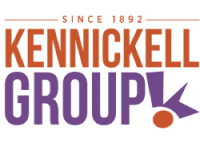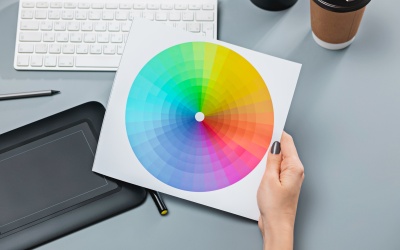In the dynamic world of branding, every element conveys a message, and perhaps none more so than color. The hues you choose for your brand guide can evoke specific emotions, set the tone for your messaging, and ultimately leave a lasting impression on your audience. This guide to color psychology will illuminate the impact of different shades, empowering you to make informed choices that resonate with your target market.
Understanding Your Brand Guide
A brand guide, often referred to as a style guide, is a comprehensive document that outlines the visual elements of your brand. It serves as a reference for maintaining consistency in all your marketing materials, from logos and fonts to, crucially, color schemes. A well-crafted brand guide ensures that your brand’s visual identity remains cohesive across various platforms and resonates with your audience and your brand’s goals.
The Power of Color Psychology
Colors hold immense power in shaping human emotions and perceptions. Understanding the psychological impact of different colors is pivotal in aligning your brand with the desired feelings and associations. Here’s a glimpse into how various colors can influence brand perception:
- Blue: Often associated with trust, calm, and professionalism, blue is a popular choice for corporate brands and tech companies.
- Red: This energetic hue conveys excitement, passion, and sometimes urgency. It’s frequently used by brands in the food and retail industries.
- Green: Symbolizing growth, health, and eco-friendliness, green is ideal for brands in the health, wellness, and environmental sectors.
- Yellow: Yellow exudes positivity, energy, and optimism. Brands looking to evoke feelings of happiness and cheerfulness often incorporate this color.
- Purple: Associated with luxury, creativity, and wisdom, purple is chosen by brands aiming for a sense of sophistication and elegance.
- Orange: A vibrant and friendly color, orange is often used to convey energy, enthusiasm, and creativity. It’s popular in industries like entertainment and sports.
Creating Your Brand Guide
A well-crafted brand guide ensures consistency across all your brand materials. Here’s a step-by-step guide to help you create one tailored to your brand’s personality:
- Define Your Brand: start by understanding your brand’s core values, mission, and target audience. This will provide a solid foundation for your visual identity.
- Choose Your Color Palette: Refer to color psychology to select hues that align with your brand’s personality and messaging.
- Identify other visual characteristics: Your brand guide should include not only information about color, but also what fonts you want to use and where, as well as images that reflect the branding identity of your business. For example, if you want a modern coastal feel for your branding, some images to include might be soft beige sand or stylized images of the beach.
- Establish Usage Guidelines: Specify where and how each color should be used. For instance, primary and secondary colors, background colors, and accent colors.
- Provide Visual Examples: Include swatches and examples of each color to ensure clarity in implementation.
- Test for Consistency: Apply your color palette across various mediums to ensure consistency in appearance.
Tailoring Colors to Your Business Type
Different industries benefit from different color schemes. Here are some tailored recommendations based on business types:
- Tech Startups: Blues and greens can convey trust, reliability, and innovation.
- Health and Wellness: Greens and blues evoke feelings of health, balance, and calm.
- Retail and Hospitality: Reds and yellows can create a sense of excitement and urgency.
- Creative Agencies: Purples and oranges can signal creativity, innovation, and luxury.
- Environmental Organizations: Shades of green are the obvious choice, representing nature, growth, and sustainability.
Selecting the right colors for your brand is a pivotal decision that should not be taken lightly. By understanding the principles of color psychology and crafting a comprehensive brand guide, you can ensure that your visual identity resonates with your target audience. Remember, your brand’s colors are not just a design choice; they’re a communication tool that conveys the essence of your brand to the world. So, choose wisely, and let your brand’s colors tell a compelling story.
Check out our other recent blogs:
7 Surprising Benefits of Adding a Wall Mural to Your Business
What elements go into a memorable business card? Here are the top 5 tips you need in order to stand out in the crowd – or in this case, the stack.
5 Steps to a Memorable Business Card
What elements go into a memorable business card? Here are the top 5 tips you need in order to stand out in the crowd – or in this case, the stack.
Color Psychology in Advertising: Influencing Consumer Behavior with Color
In the world of marketing and advertising, understanding the impact of color psychology in advertising is crucial for businesses aiming to capture the attention and loyalty of consumers. Numerous academic studies have delved into the fascinating realm of how different...






